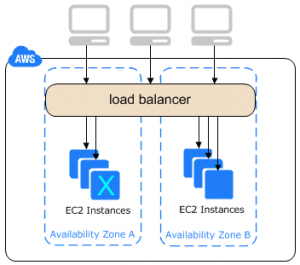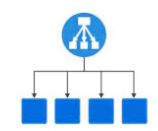Learn AWS ELB | 3 Major Types of Load Balancer in AWS
Free AWS Course for AWS Certified Cloud Practitioner (CLF-C01) Start Now!!
In our previous tutorial, we studied the AWS Elastic Beanstalk. Now we are going to learn AWS ELB or Amazon Elastic Load Balance.
In this Amazon load balance tutorial, we will cover types of load balancer in AWS: Classic Load Balancers, Application Load Balancers, and Network Load Balancers.
So, let’s start the AWS ELB Tutorial.
What is AWS ELB?
AWS ELB (Amazon Elastic Load Balance) helps to distribute the application traffic to various different targets such as EC2 instances. The vacant targets which are ready to collect the traffic are monitored by Amazon ELB whether they are healthy or not and the traffic is sent to the healthy one.
AWS ELB comes in three versions which perform different tasks.
- The Version 1 provides detailed instructions for using Classic Load Balancers.
- 2nd version provides detailed instructions for using Application Load Balancers.
- 3rd provides detailed instructions for using Network Load Balancers.
Types of Load Balancer in AWS
These are the unique Versions of AWS ELB, let’s discuss them one by one:
a. Classic Load Balancers
Classic Load Balancers distribute upcoming traffic to different EC2 instances in multiple Availability Zones. During this process, there is a chance of the fault tolerance of your application. These Load Balancers detect healthy and unhealthy instance and direct the traffic towards only healthy ones.
It also helps in a way such that without disrupting the flow of requests to your application you can add or remove instances from your load balancers as your need changes.
AWS ELB can calculate the majority of workloads automatically. Protocol and port which a person configures are used to detect the connection requests from clients it also forwards requests to one or more registered instances.
Technology is evolving rapidly!
Stay updated with DataFlair on WhatsApp!!
The number of instances can be modified. Health checks can be monitored so that the load balancer only sends requests to the healthy instances.
Benefits of Load Balancers-
- Provides Support to TCP and SSL listeners.
- Support to Sticky Session.
- Support to EC2- Classic.
b. Application Load Balancers
After receiving the request Application Load Balancer analyzes the rules provide by the listener in priority order and determines the rule which has to apply. After that, it selects a target from the target group for the rule action.
An Application Load Balancer functions at the Open Systems Interconnection (OSI) model which is the seventh layer of the OSI model.
The User can analyze the rules of the listener and can modify it by sending it to different target groups based on the content of the application traffic even when the target is associated with multiple target groups.
Addition and removal of tags can do from the load balancers as per your needs. This can done without breaking the flow of your requests of the application.
Benefits of Application Load balancers-
- Load Balancer’s performance improve in Application Load Balancer.
- Access logs containing information compress such that they may not require the additional space.
- Provides benefit for registering targets by IP address, including targets outside the VPC for the load balancer.
c. Network Load Balancers
It is the fourth layer of the Open System Interconnection Model. After the load balancer receives a connection request, it selects a target from the group which targets for the default rule.
After enabling the availability zone Elastic Load Balancer creates the load balancer node in the availability zone. Each load balancer node automatically distributes traffic across the registered targets in its Availability Zone only.
Cross-zone Load Balancing enables to distribute traffic across the registered targets in all enabled Availability Zones.
Enabling Multiple Availability Zone can cause harm by increasing the fault tolerance of the applications and it will happen if each target group has at least one target in each enabled Availability Zone.
The problem can overcome in such a way that if one or more target groups do not have a healthy target in an Availability Zone, the IP address for the corresponding subnet from DNS is removed. If a person attempts again the request fails.
Benefits of Network Load Balancers-
- NLB Provides the Support for static IP addresses for the load balancer.
- Provides support for registering targets by IP address which includes target outside the VPC for the Load Balancer.
- Provides support for monitoring the health of each service independently.
So, this was all about AWS ELB Tutorial. Hope you like our explanation.
Conclusion
Hence, in AWS ELB tutorial, we studied the load balancer distributes traffic evenly across the Availability Zones that you enable for your load balancer. AWS Elastic Load Balance is one of the effective ways to manage and deploy the application as it is fast, reliable, and efficient.
Load Balancer simplifies and improves the security of your application and hence provides security which makes it a reliable function. Furthermore, if you have any doubt regarding AWS ELB, feel free to ask in the comment box.
We work very hard to provide you quality material
Could you take 15 seconds and share your happy experience on Google




